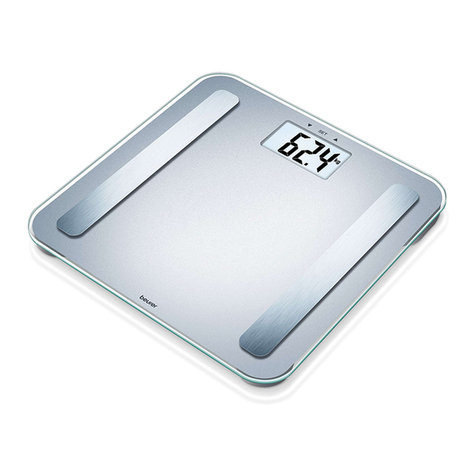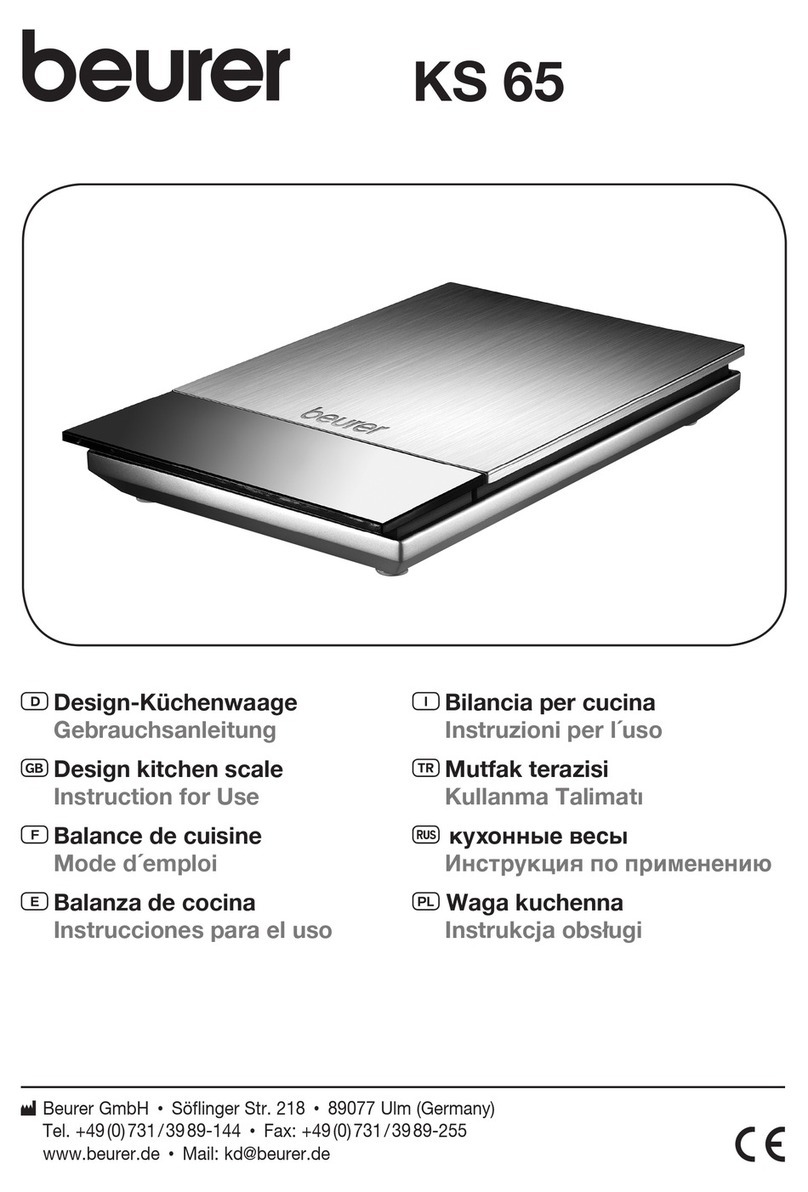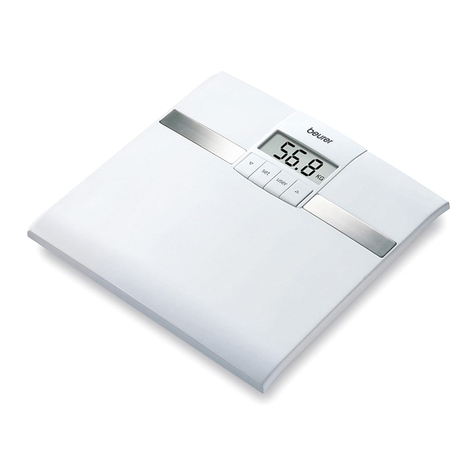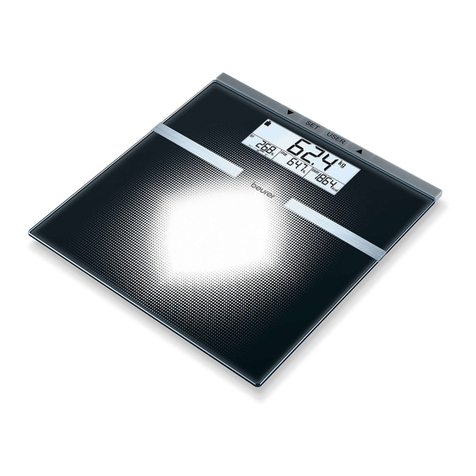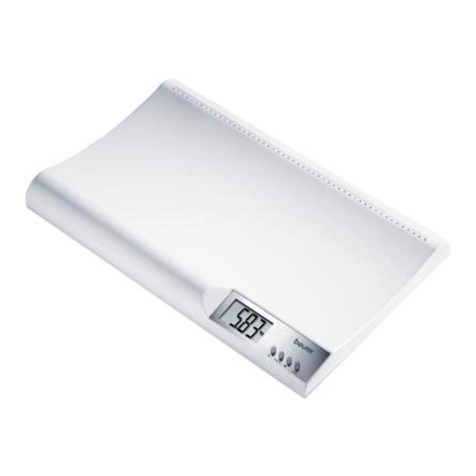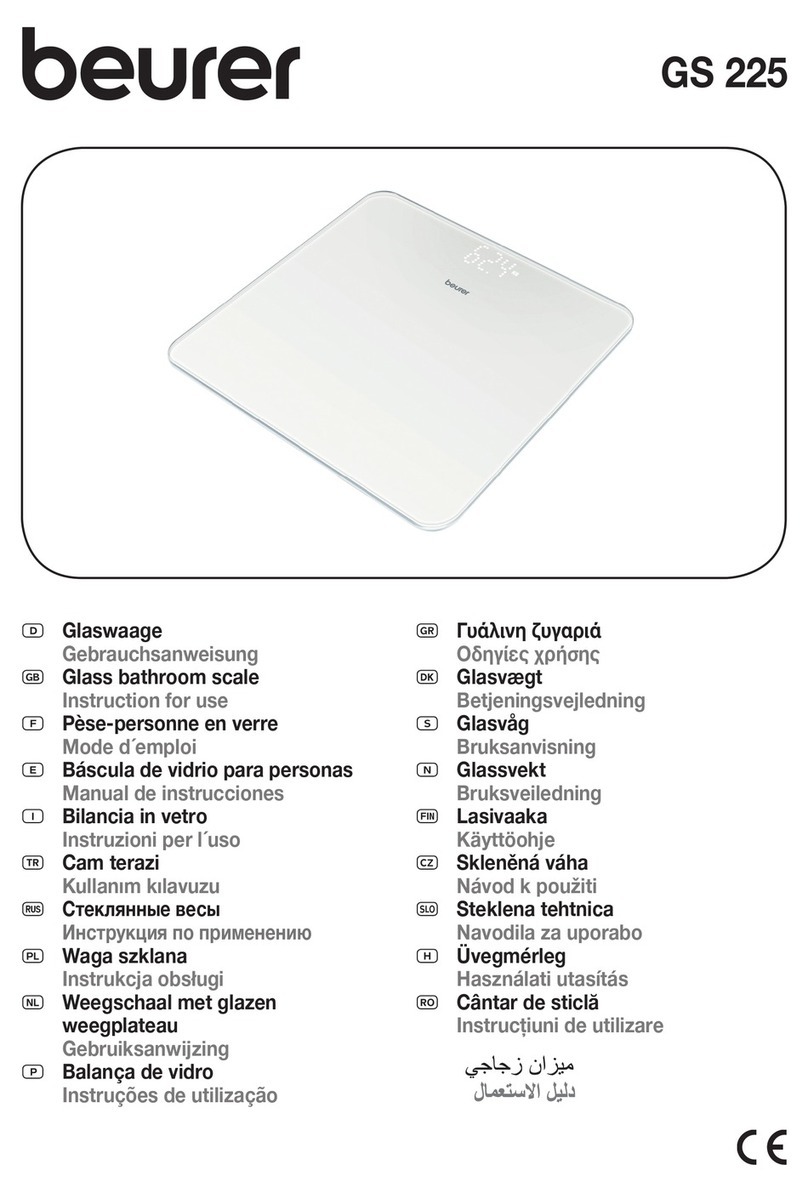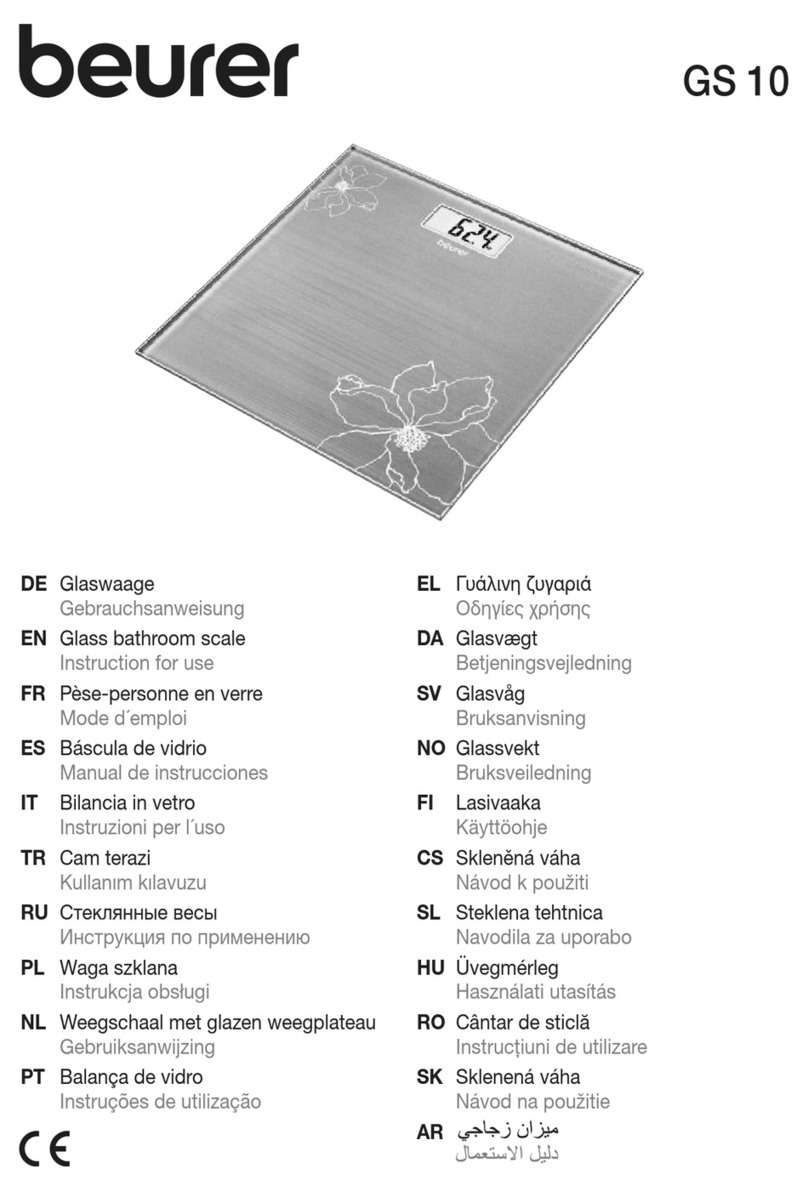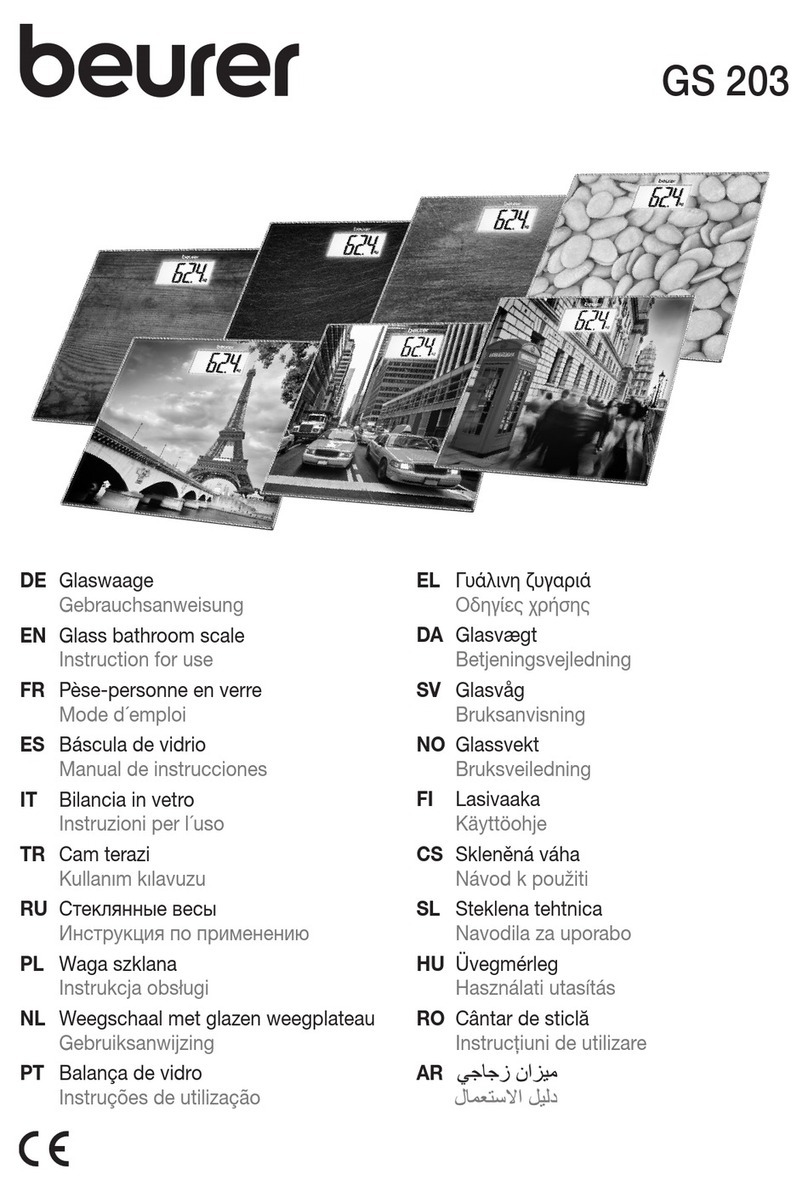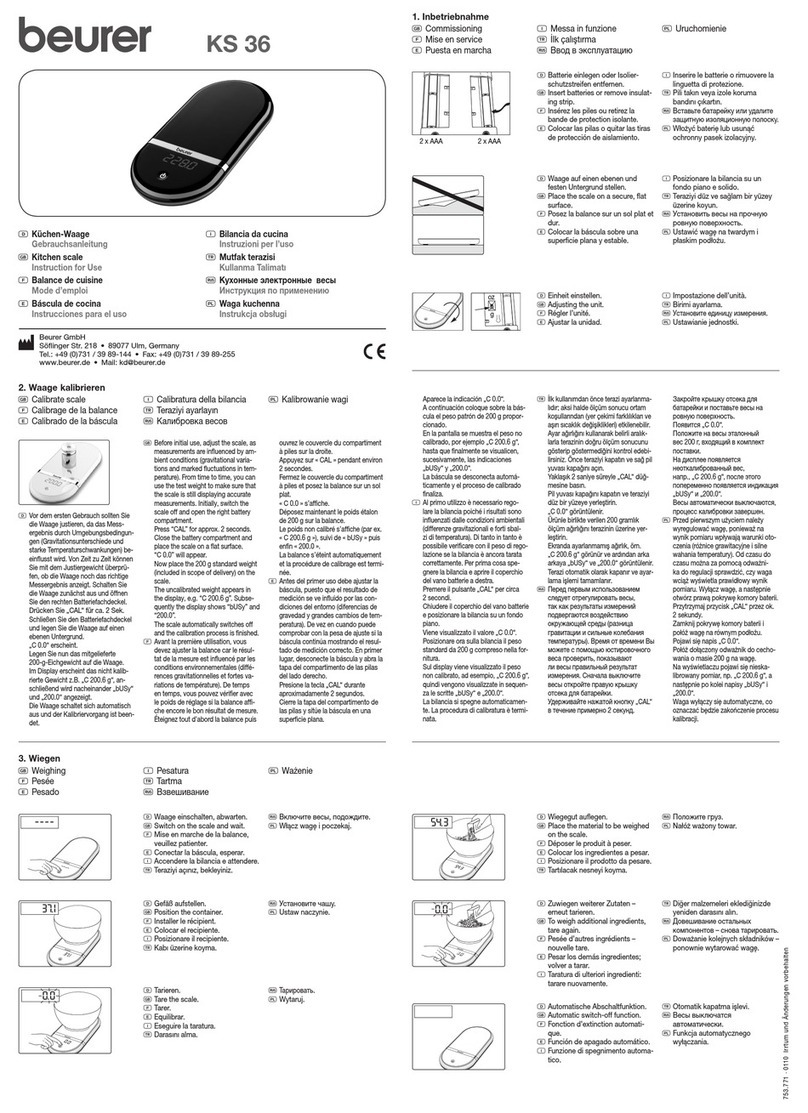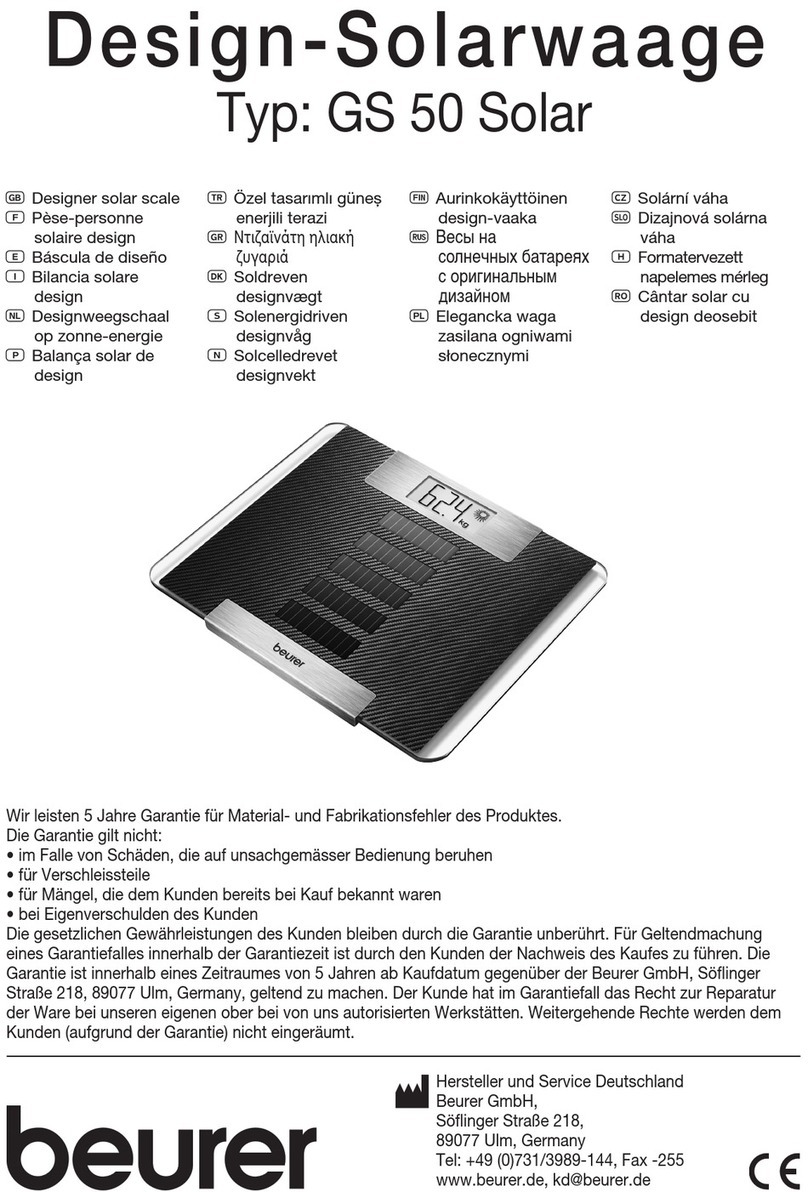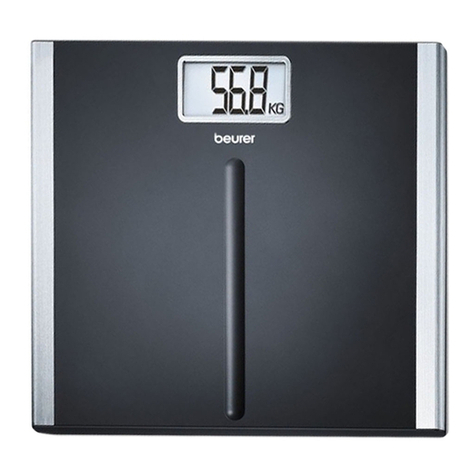
13
The measurement is not reliable for:
– Children under approx. 10 years of age.
– Competitive athletes, Bodybuilders.
– Pregnant women.
– Persons with fever, undergoing dialysis, with symptoms of edema or osteoporosis.
– Persons taking cardiovascular medication.
– Persons taking vascodialating or vascoconstricting medications.
– Persons with substantial anatomical deviations in the legs relative to their total height (leg length considerably
shorter or longer than usual).
The measuring principle
This scale works on the principle of B.I.A. (bioelectrical impedance analysis). This involves the calculation of body
content within seconds, using a current that is not noticeable, is completely non-hazardous and does not pose
any risk.
When this measurement of the electrical resistance (impedance) is considered alongside constants and/ or indi-
vidual values (age, height, gender, activity level), the body fat percentage and other variables in the body can be
calculated. Muscle tissue and water conduct electricity well and therefore have a lower resistance. In contrast,
bones and fat tissue have low conductivity as the fat cells and bones are barely able to conduct the current due
to very high levels of resistance.
Please note that the values calculated by the diagnostic scale only represent an approximation of the actual medi-
cal analytical values for the body. Only a specialist doctor can precisely establish the body fat, body water, muscle
percentage and bone structure using medical methods (e.g. computer tomography).
3. Evaluation of results
Body fat percentage
The following body fat percentages are for guidance (contact your physician for further information).
Man Woman
Age very good good average poor
10–14 <11% 11–16% 16,1–21% >21,1%
15-19 <12% 12-17% 17,1-22% >22,1%
20-29 <13% 13-18% 18,1-23% >23,1%
30-39 <14% 14-19% 19,1-24% >24,1%
40-49 <15% 15-20% 20,1-25% >25,1%
50-59 <16% 16-21% 21,1-26% >26,1%
60-69 <17% 17-22% 22,1-27% >27,1%
70-100 <18% 18-23% 23,1-28% >28,1%
Age very good good average poor
10-14 <16% 16-21% 21,1-26% >26,1%
15-19 <17% 17-22% 22,1-27% >27,1%
20-29 <18% 18-23% 23,1-28% >28,1%
30-39 <19% 19-24% 24,1-29% >29,1%
40-49 <20% 20-25% 25,1-30% >30,1%
50-59 <21% 21-26% 26,1-31% >31,1%
60-69 <22% 22-27% 27,1-32% >32,1%
70-100 <23% 23-28% 28,1-33% >33,1%
A lower value is often found in athletes. Depending on the type of sports, training intensity and physical constitu-
tion, values may result which are below the recommended values stated.
It should, however, be noted that there could be a danger to health in the case of extremely low values.
Body water:
The body water percentage (%) is normally within the following ranges:
Man Woman
Age poor good very good
10-100 <50 50-65% >65
Age poor good very good
10-100 <45 45-60% >60
Body fat contains relatively little water. Therefore persons with a high body fat percentage have body water per-
centages below the recommended values. With endurance athletes, however, the recommended values could be
exceeded due to low fat percentages and high muscle percentage.
Body water measurement with this scale is not suitable for drawing medical conclusions, for example concerning
age-related water retention. If necessary ask your physician.
Basically, a high body water percentage should be the aim.

